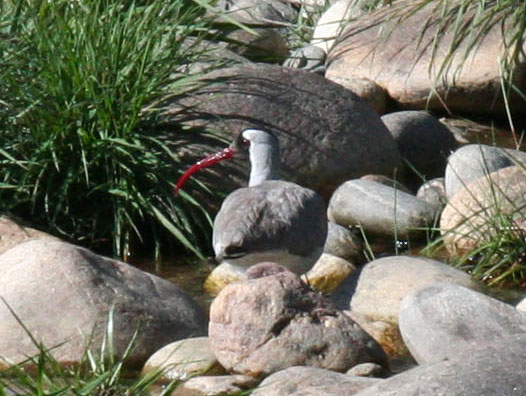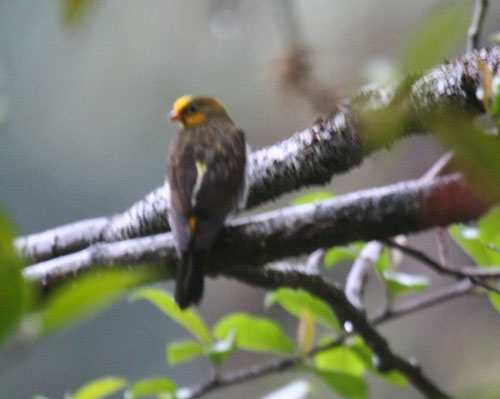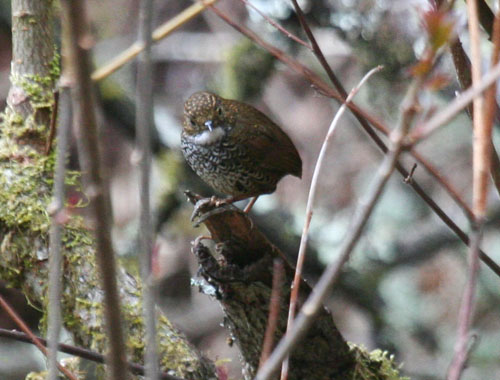One of the reasons we chose to go to Bhutan on a birding tour was that there are a few families of birds that can be found there that I had never seen. These were: Ibisbill, Honeyguide, Cupwings (Wren-Babblers), and Fairy Bluebirds. The Tour Company’s checklist from prior trips to the area included the possibility of finding at least one species in each of those. We struck out on the Fairy Bluebird, but succeeded with the other three.
The first bird we saw after arriving at the Paro Airport was an Ibisbill. This distinctly marked wader was easily observed along the rocky riverside near the Paro Airport.

There are over 15 or more species of Honeyguide, mostly in Africa, but with one or two in Bhutan. We succeeded in finding at least 2 of these interesting honey fans. Here is one of the Yellow-rumped Honeyguides that gave us some good views in what is apparently a frequently used perch near some cliff-dwelling bees.

The Cupwings were a challenge. We spent quite a few hours on several days trying to spot one of these secretive and elusive little ground dwellers. Barbara eventually spotted one on the opposite side of the road from where the rest of the group was searching vainly for the source of the song of a Scaly-breasted Cupwing.

A second species of the Cupwing family that has been seen on some prior Bhutan tours is the Pygmy Cupwing, but we neither heard nor saw one of those on this trip.
Woodshrikes and Flycatcher-shrikes of certain species, based on genetic analysis, have been moved into the Vanga family. Vangas have, until recently, been thought to exist only in the Madagascar area. We did see both a Large Woodshrike and a Bar-winged Flycatcher-shrike.
It is hard to keep up with all the changes going on in the scientific classification of birds. As genetic studies proliferate, I suspect there will be many more changes. The most current list of bird families and species is the Clements Checklist Version 2016 published by the Cornell Lab of Ornithology. It can be found on-line in a downloadable spreadsheet version.
My next installment will feature some of the more spectacular birds we saw, including Hornbills, as well as a distant view of one of the rarest birds on earth, the White-bellied Heron.
